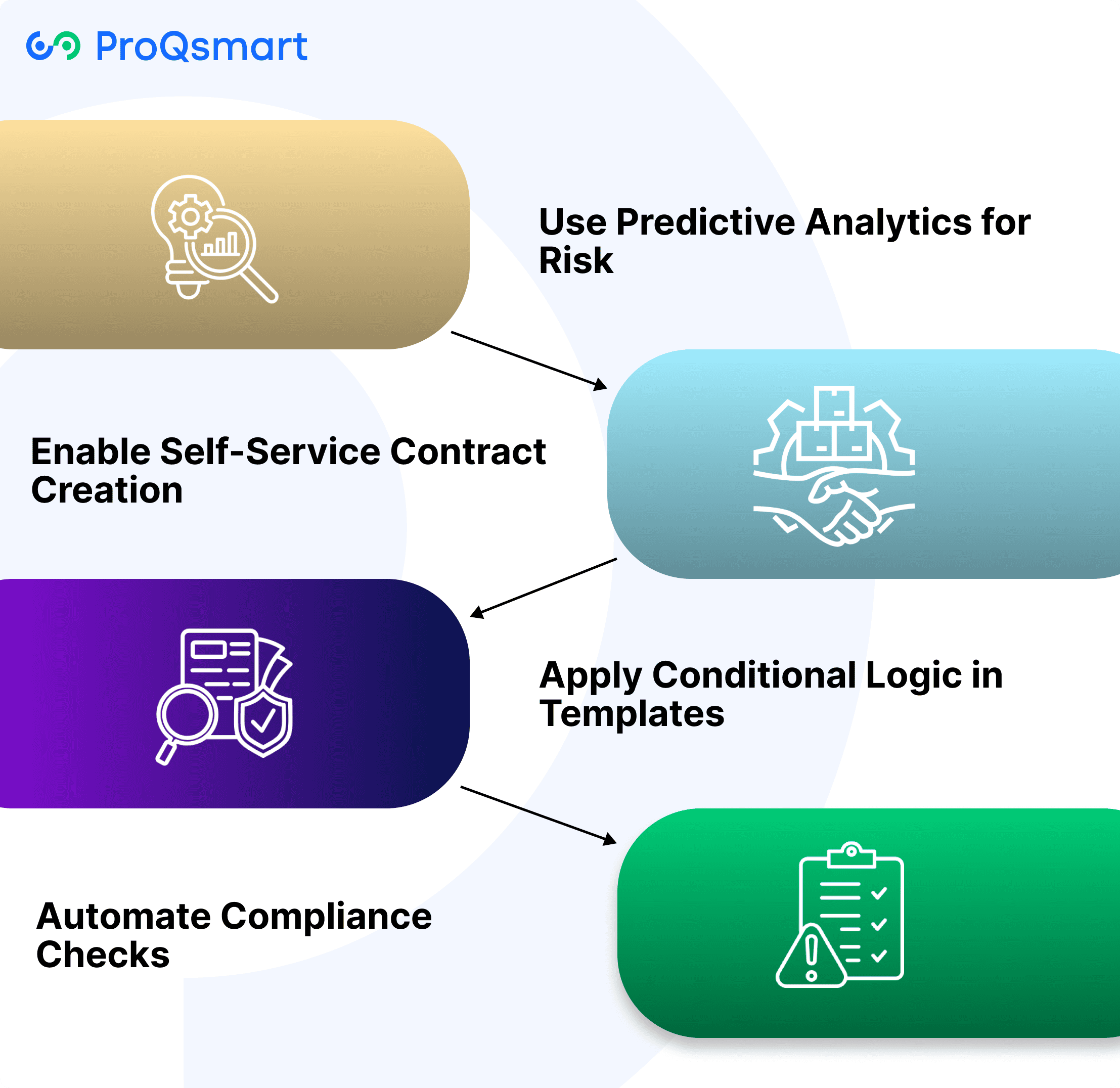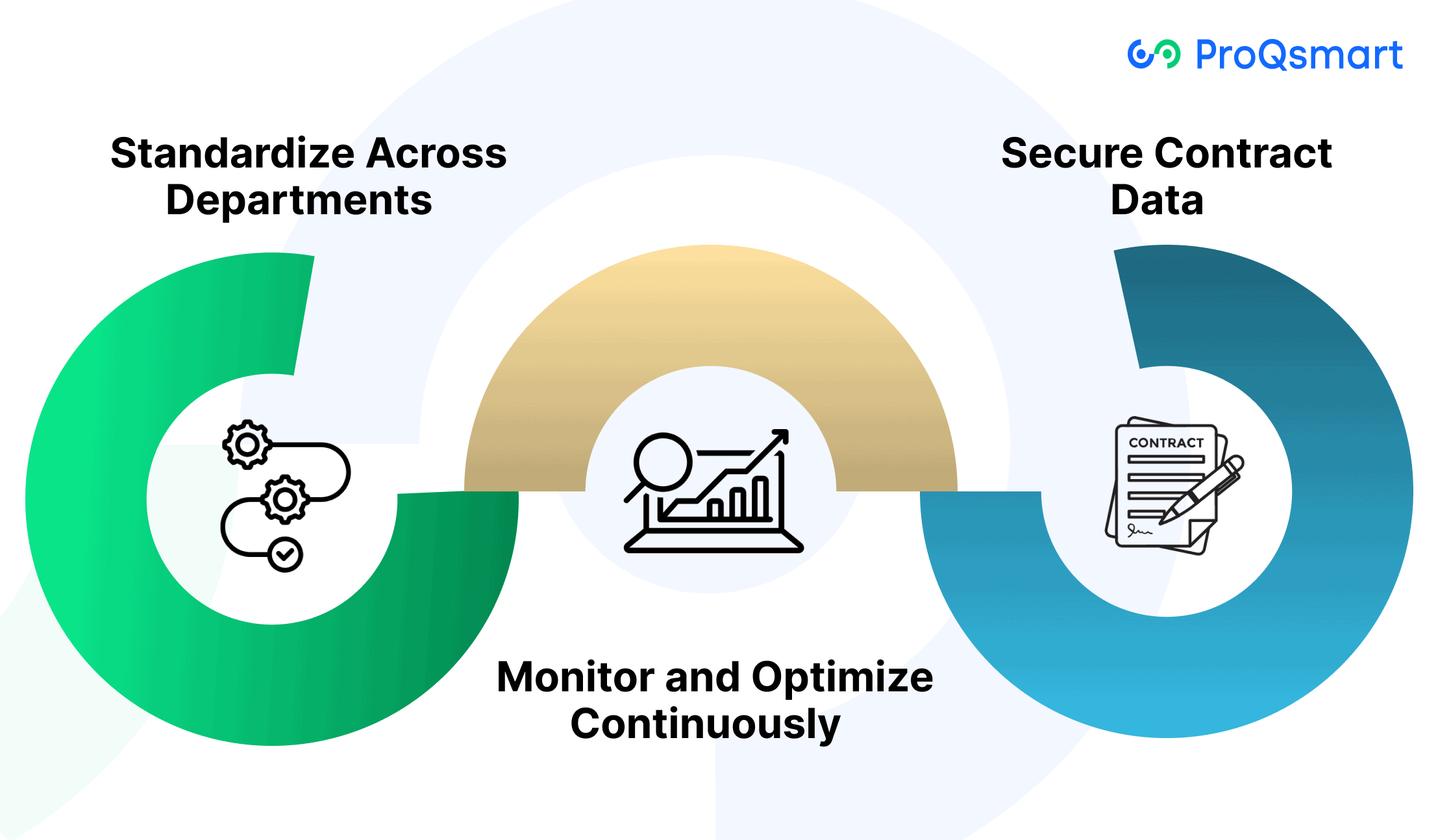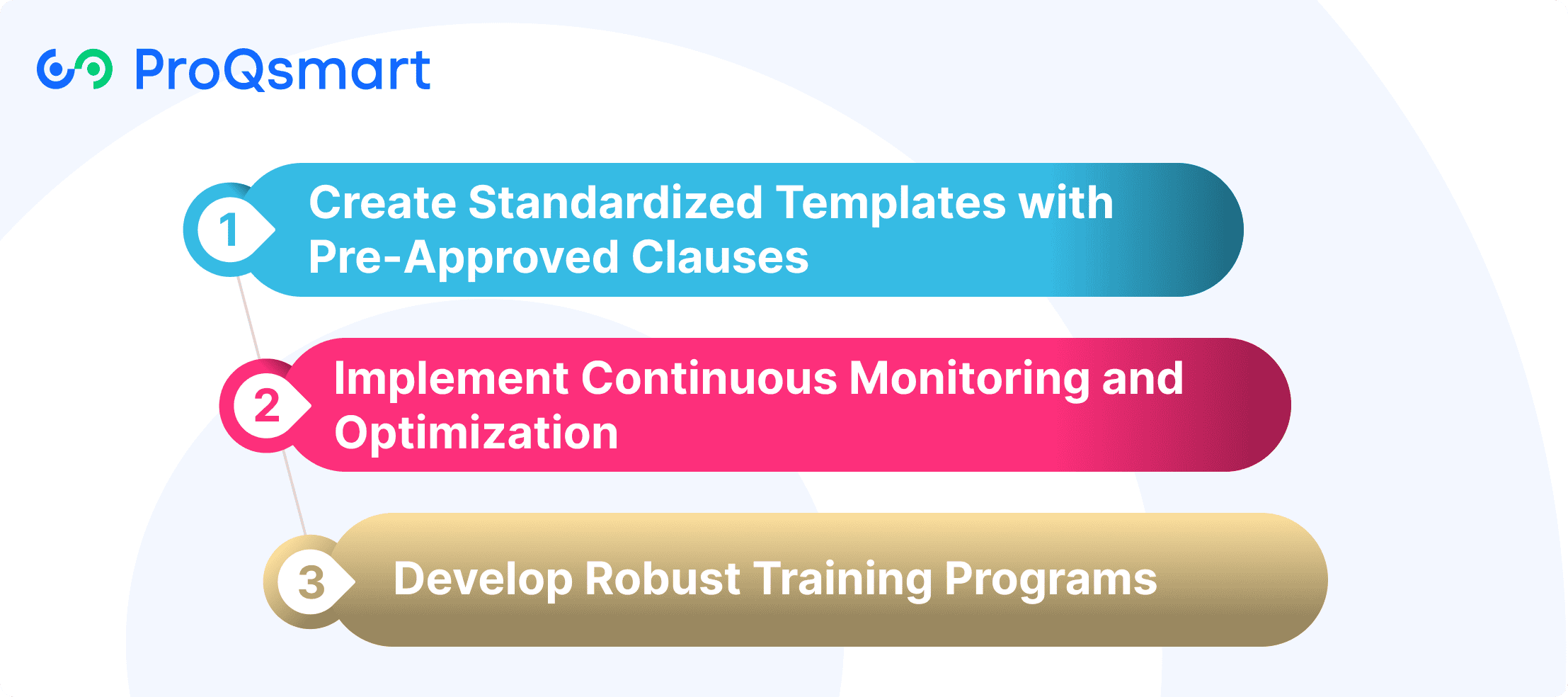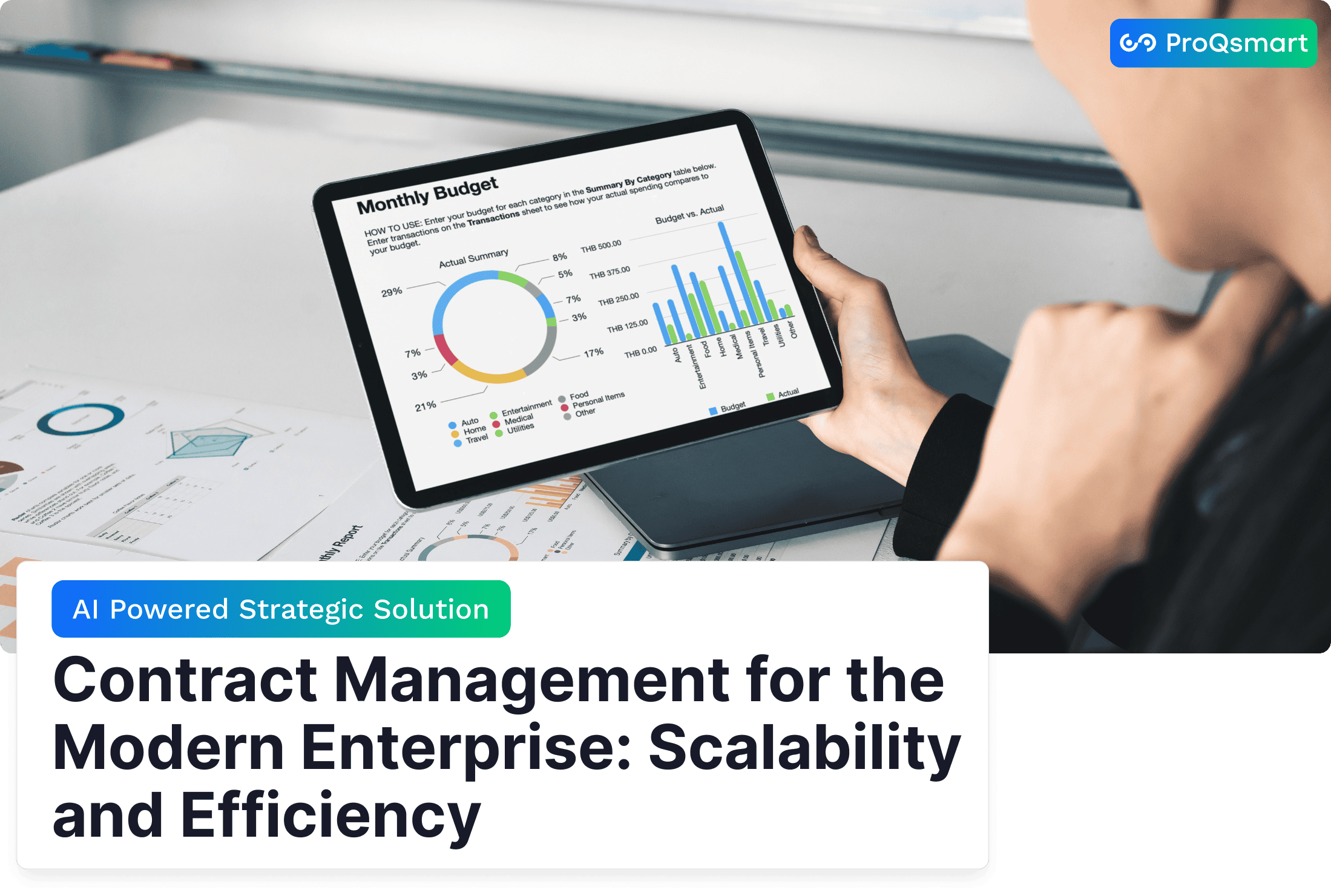Effective contract lifecycle management is about managing the contract and the relationship while ensuring that both the organization and their vendors fulfill their obligations for a mutually beneficial partnership. It addresses the complete lifecycle of a contract — drafting and negotiation, execution, monitoring, and renewal/termination.
Proper contract management enables organizations to minimize risks, manage costs, and nurture supplier relationships. As seen in dynamic spaces such as manufacturing and construction, effective contract management is key. It provides for uninterrupted service delivery, punctual performance, and adherence to all legal and regulatory standards.
By building in technology, including robust contract management software, agencies can ensure processes are streamlined, more transparent, and better decisions are made. From realizing operational excellence to creating a foundation for sustainable business growth, understanding the critical nuances of contract management is key.
In the following sections, we’ll dive into the strategies and best practices that are making these places successful, one by one.
Challenges in Enterprise Contract Management
While effective enterprise contract management is key to enterprise success, it’s an enterprise blind spot for many organizations. Organizations today face an increasingly challenging landscape filled with massive amounts of intricate contracts, organizational silos across functions, and escalating risks affecting both top-line revenue and regulatory compliance.
Without these strong systems in place, the inefficiencies continue to add up, undermining operational as well as financial performance.
High Contract Volume and Complexity
Managing tens of thousands of contracts at once creates enormous accountability hurdles. Contracts are highly diverse—vendor contracts, customer contracts, and contracts to comply with government regulations, all with different terms and conditions and obligations.
Take for example a manufacturing firm that must manage supplier contracts in addition to various warranties and service contracts, all needing the ability to track details with precision. Without clear and consistent processes, errors and missed obligations are unavoidable.
Automation and highly centralized systems are important for enterprises to be able to manage such complexities in an efficient manner.
Cross-Functional Misalignment Issues
Inefficiencies abound due to the lack of standardized contract formats and processes among the various departments. For example, procurement teams might want clauses that maximize cost savings while legal teams want compliance, resulting in competing objectives.
Regional differences in contracts like state variations in regulations only add to the ever-growing difficulty of standardization. Establishing standardized processes promotes teamwork and reduces duplicative efforts, paving a way for more efficient cross-functional operations.
Risks of Revenue Leakage
The potential revenue losses from inadequate contract management processes are staggering. Missed deadlines, such as a renewal date or failing to comply with new legislation’s penalty provisions, can rack up millions. Proactive measures like contract automation and contract management software features can address these risks in a cost-effective manner.
Data Silos and Lack of Visibility
Siloed data continues to be a significant barrier to effective contract tracking and analysis. Over half of all companies can’t even say where all their contracts are.
Centralized access provides total visibility in one place, allowing organizations to make more informed and strategic decisions. Utilizing contract lifecycle management (CLM) software facilitates cross-organization collaboration and helps companies comply with applicable privacy laws and regulations.
Key Components of Scalable Systems
Scalable, purpose-built contract management systems are key for any organization that wants to get the most out of their procurement efforts and take control of their contracts. These systems help organizations meet increasing contract demands while maintaining control over costs, compliance and collaboration.
Through the harmonization of cutting-edge technology, improved workflows, and broader data access, scalable systems do for enterprises what operational excellence aims to do.
Centralized Contract Repository Benefits
A centralized contract repository serves as the backbone of a strong Contract Management System (CMS). Storing the contracts in a centralized and secure database allows for quick searching, retrieval, and version-control.
Advanced system security features such as two-factor authentication, encryption, and ISO/IEC 27001 certification protect sensitive data and maintain compliance. This centralization leads to improved inter-team collaboration and coordination.
It eliminates redundant work and allows changes to contract status to be tracked in real time—a key factor in reducing holdups and increasing efficiency. Through automated workflows and real-time supplier performance monitoring, ProQsmart efficiently bridges this gap with seamless document management and enhanced sourcing transparency.
Automate Contract Workflows
With automated contract workflows, these bottlenecks in approval processes are eliminated or even reversed, leading to fewer human errors and faster contract lifecycles. By automatically generating recurring ad-hoc tasks like renewal notifications or compliance checks, staff can spend time on higher impact, long-term initiatives.
With ProQsmart’s AI-driven solutions automating workflows and keeping procurement in line with budgets and regulations, efficiency and accuracy are improved.
Integrate with Enterprise Systems
Integration with platforms like ERP, CRM, and software suites enhances decision-making by enabling seamless data flow. Subcontractor management is ProQsmart’s strong suit and sources capital expenditure.
This capability makes integration a breeze, providing real-time, bird’s eye visibility and improving inter-department collaboration.
Enhance Collaboration and Tracking
Through real-time collaboration, powered by ProQsmart, all affected stakeholders—all taxpayers—can conveniently track progress and ensure contractual commitments are being met.
Capabilities such as mobile access and supplier relationship management make remote work for teams seamless while increasing communication and contract execution.
How AI Improves Scalability and Efficiency

AI’s transformative force on contract management has changed the way businesses take control of agreements from initiation to execution and beyond. Through enhanced efficiency and scalable solutions powered by AI, organizations can save significant manual time and effort, reduce manual errors, and better understand their entire contractual ecosystem.
These tools not only streamline processes but allow legal teams to focus on higher-value tasks, enhancing their overall effectiveness.
1. Use Predictive Analytics for Risk
AI tools easily analyze historical data to forecast risks, providing companies with the insights needed to spot potential challenges before they become critical issues. For instance, after analyzing historical trends in contract conflicts, AI technology is able to forecast when terms are likely to create risk or lead to non-compliance.
This proactive decision-making is what amplifies teams’ leverage in negotiations, allowing them to be transparent and able to tackle critiques head-on. Harnessing predictive analytics within contract management protects against losses typically incurred due to missed risks, allowing organizations to make more proactive, data-informed decisions.
2. Enable Self-Service Contract Creation
AI-powered self-service tools dramatically reduce the time needed for contract creation by offering pre-approved templates, accelerating workflows while increasing compliance and reducing errors. These tools minimize the need to involve legal professionals for day-to-day tasks, slashing legal operating costs without sacrificing legal compliance.
ProQsmart’s procurement platform uses e-tenders and automated workflows. This method automatically accelerates document production, maximizing productivity and improving collaboration among departments.
3. Apply Conditional Logic in Templates
Smart templates leveraging conditional logic automate fallback clauses, fostering creativity and flexibility without sacrificing brand integrity or consistency. By taking this approach, lucrative monopoly errors are minimized, and businesses have the flexibility to tailor contracts to more nuanced scenarios.
One of the best practices we found was integrating conditional logic directly into established platforms, such as ERP systems, to create a frictionless process.
4. Automate Compliance Checks
Automated compliance checks help reduce risks by verifying that contracts are compliant with laws and regulations. AI tools such as ProQsmart create a clear audit trail which helps to eliminate up to 90% of non-compliance and avoids significant penalties.
These systems further improve transparency and build public trust around the fulfillment of contracts.
Best Practices for Scaling Contract Management

Scaling contract management is critical for all organizations looking to increase efficiency, save time and money, and maintain compliance. By adopting more structured practices and utilizing contract management software solutions, organizations of all types can accelerate operations and get the most value out of their contracts.
Standardize Across Departments
Creating standardized templates customized to the specific requirements of each department, agency, or office helps maintain efficiency and consistency with language, terms, and obligations in contracts. For example, taking the form’s liability clauses or payment terms clause should be similar, reducing risk and uncertainty.
It eases collaboration between procurement, legal, and finance teams, making errors during contract drafting less likely. To do so, organizations should set centralized guidelines that include the voice of departments, making sure they’re as relevant as possible while providing needed consistency across functions.
Monitor and Optimize Continuously
Conducting periodic reviews of your contract management workflows is key to spotting where your processes are inefficient. User feedback, particularly from teams who are on the frontlines moving contracts through day-to-day, can illuminate any bottlenecks or duplicative steps.
Metrics like contract cycle time, compliance rates, and savings realized through renegotiations paint a picture of performance. For instance, by automating approval workflows directly through a CLM platform, you can minimize bottlenecks and I’ll pick that up in accountability.
Through this process, businesses will have the opportunity to benchmark their practices against industry standards to ensure they remain competitive and in-step with evolving best practices.
Secure Contract Data
Sacrificing sensitive contract information is off the table. Safe, searchable storage is essential. A centralized digital repository within a CLM platform keeps documents secure and easily accessible.
Examples of these best practices start with data encryption, robust access controls, and regular third-party audits to protect the data integrity. Utilizing tools such as ProQsmart to receive, evaluate, and award proposals further protects sensitive data, meets compliance requirements, and promotes transparency within procurement activities.
Strategies for an Effective Contract Management

Create Standardized Templates with Pre-Approved Clauses
Providing standardized templates with pre-approved clauses, created based on the needs of different departments such as procurement and sales, makes creating contracts easier while fostering uniformity.
By providing the necessary foundation for a consistent and repeatable process, these templates help minimize risks associated with errors and non-compliance. Procurement templates ensure that supplier performance is measured by specific metrics.
Conversely, templates used by sales departments focus mainly on payment schedule milestones and delivery dates. Bringing these templates into a CLM system takes the accessibility and usability a step further.
Implement Continuous Monitoring and Optimization
Continuous monitoring ensures workflows remain efficient and aligned with business goals. By continually adapting processes from user feedback, we can find out where the bottlenecks and issues are and fix those pain points.
For instance, if the contractors complain of a long approval loop, the entity can make a process change to speed things up. By leveraging CLM software with analytics capabilities, organizations can track key performance indicators, including contract cycle times, delivering actionable insights to streamline processes.
Develop Robust Training Programs
Thorough training modules play a vital role in creating high adoption rates of contract management systems. By preparing users for new capabilities, whether it be with real-time collaboration features or automated approval workflows, organizations set the stage for effective usage.
Interactive sessions, easily accessible user guides, and ongoing after-implementation support foster confidence and skillfulness on the user end.
ProQsmart, with features like AI-driven workflows and supplier performance monitoring, is a powerful tool to streamline contract management and drive results.
Conclusion
Effective contract management is at the heart of building impactful and dependable business processes. Scaling these systems requires precise strategies, advanced tools, and a commitment to addressing major challenges upfront. By leveraging AI-driven solutions, organizations can unlock new levels of productivity, streamline workflows, mitigate risks, and empower teams to work smarter, not harder. These systems not only improve operational efficiency but also nurture long-term partnerships built on trust and transparency.
Adopting best practices in contract management is more than staying competitive—it’s about aligning your operations with strategic objectives and fostering growth. With the right tools, contracts become catalysts for business success, driving measurable outcomes and advancing compliance goals. Now is the time to rethink your approach to contract management and make your contracts work harder for you.
Explore ProQsmart’s innovative contract management solutions—book a demo today to discover how AI-powered tools can transform your contract operations and drive sustainable growth.




